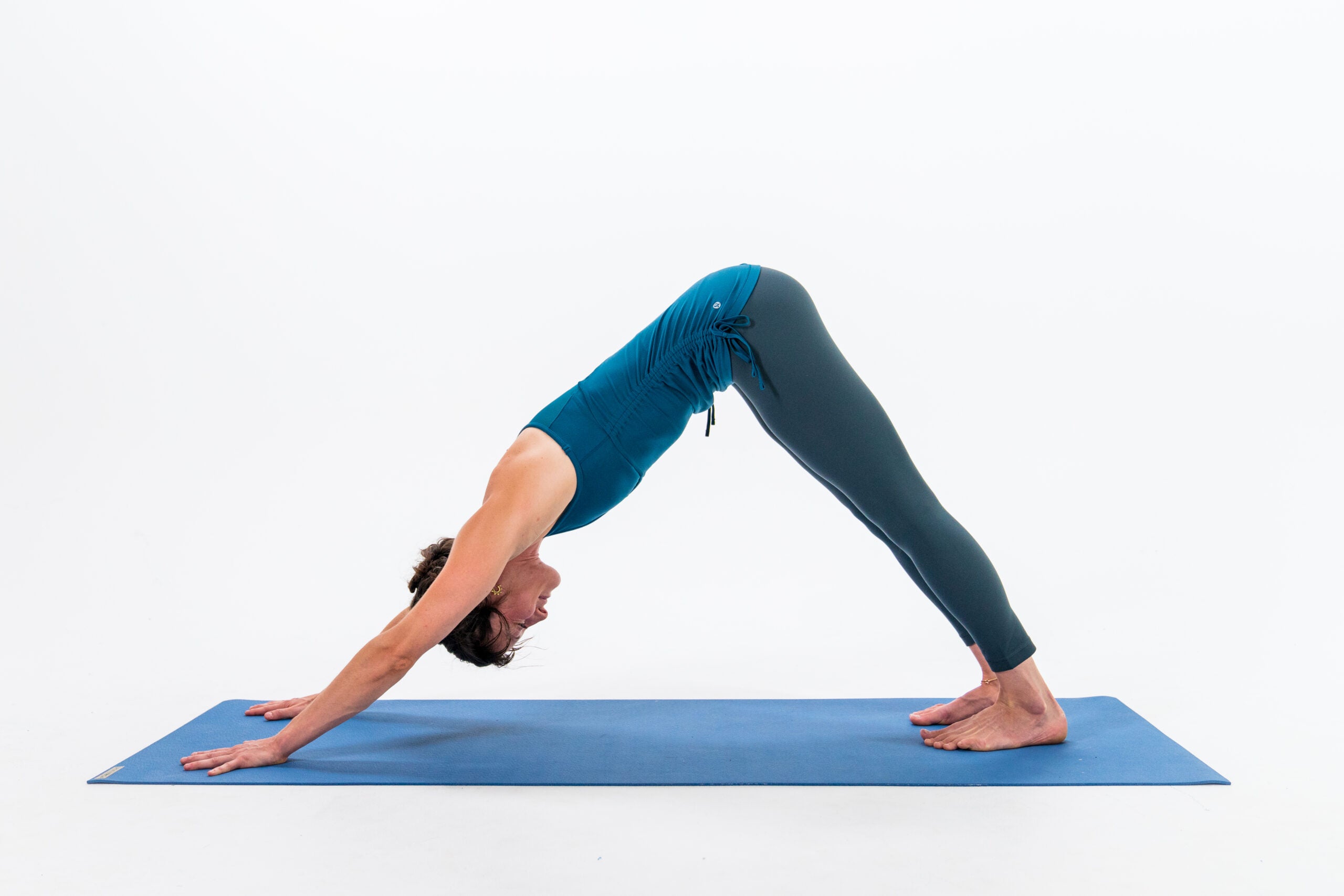Before we begin, I must make clear, I am in no way an expert on yoga. I’m not proficient enough at said art to advise or teach someone, so if you’re hoping for advice on positions, you’re out of luck.
However, from years of sports, voice discipline and martial arts, I have relatively good body awareness. From the nature of training voice as well, the “learning experience” is something I spend a lot of time immersed in, and I’m used to trying to find more efficient ways of doing things, especially through repetition.
As such, a few things came to mind during yoga practice over the last few years or so that mirror my experience with voice training. Some of these I thought worth sharing:
1. Repetition and refinement
There are many positions in yoga. Some are referred to as their anglicised names like “cat-cow” or “child’s pose”, and others utilise the original sanskrit. There’s one pose I found particularly difficult at first: “downward facing dog”:
I am relatively strong, but very quickly I was shaking in the shoulders. I got a little stronger with repetition over the first handful of practice sessions, but I was clearly missing something. Whatever I was missing was something that simply repeating what I was doing wouldn’t work. As I kept practicing, I made tiny adjustments to my body position to try to find a less strenuous way of holding it. Then, I made one particular adjustment that enabled my skeleton to bear more of my weight. Suddenly, an equilibrium was reached, and the muscles stopped shaking.
The point is this: repetition and refinement go hand in hand. You can’t carve away the imperfection without repeatedly facing it. This requires embracing getting it wrong and improving through conscious repetition and refinement.
The same is true with voice, or anything for that matter. People think they can trick their voice to the top notes, or that once they’ve got the top notes, they’ve got them and they don’t need to do any further work. On the contrary, repetition and refinement will always pay dividends to those willing to put in the work. #
Whether that’s easier access, more power for less work, more stamina, repetition and refinement is critical. But what else follows from this?
2. Efficiency and fluency
Yoga is more than just a string of stand-alone poses. One of the key goals is to put the poses you are working on into a fluid flow. Much like a workout routine, but with fluid connection between the poses.
The aim is to move fluidly from one position to another. Some poses are enabling levels of dynamic rest, and others are progressively taxing your body and raising your heart rate. Each pose should dovetail neatly with the next, elevating your capacity and body facility as you do so.
The same is true with voice. The exercises that improve your voice do not stand alone, but each should dovetail neatly from one into the next, to create a flow that builds the voice up rather than destructively tear it down. Some will tax you, others should be a low impact excursion across your range. So as much as I like to compare a good vocal workout to the gym, it is very different in this regard.
As we find a flow, we increase efficiency and fluency in our bodies and our voices.
3. It should never hurt
This is a simple one: If it hurts, stop.
If it’s uncomfortable, try backing down the intensity or the approach such that the move is still doing something, but it’s comfortable. Never force your way to an imagined goal, aim for comfort and the capacity will grow.
While this is easily recognised for physical exercise, yoga, gym, etc, it’s remarkable how many people don’t realise this applies to the voice. If you force it, you’ll at best feel tense and uncomfortable, at worst you’ll damage something. And in reality, you’ll start to regress, as “accepting discomfort” becomes something your body thinks should be normal for good singing.
4. Find what works
As per the flow example in point 2, while working with an instructor they may well have a sequence of poses that they like and find work well, but you are the ultimate arbiter of your body at home.
Finding a sequence of poses (or with voice, exercises) that works for you rather than the pure hypothetical is important. It’s OK to jettison something in the middle, spend longer on something that feels good, or add something extra onto the end. Find what works for you and do it well, while still observing the above.
5. There’s always another level
With refinement and repetition you’re more or less guaranteed improvement. What people often don’t realise is that there are also emergent properties that occur.
“Emergent properties are properties that manifest themselves as the result of various system components working together, not as a property of any individual component.”
An imperfect analogy would be something like “look after the pennies and the pounds will look after themselves“. Collecting pennies every day, at some point will yield a substantial sum of money. By being faithful and attentive to the little things that breed incremental improvement, giant macro-level changes can arise.
This is that idea of “levelling up”, which often seems like magic, but is really the emergent property of improving a lot of simple yet interconnected elements. It’s not just getting better at a sequence of poses, or your vocal range improving. It’s about recognising the interconnectedness of all the actions you are taking for self-betterment. As a result, it’s really a transformative experience, one where things that once seemed impossible are now possible, and (most importantly) feel natural to do.
I’m going to get practicing
Personally, I still think I’ve got a long way to go with yoga, but I can see all these things coming together and the benefits paying off with regular practice across my week As such, I know if I keep following the above points, I’ll get somewhere!


